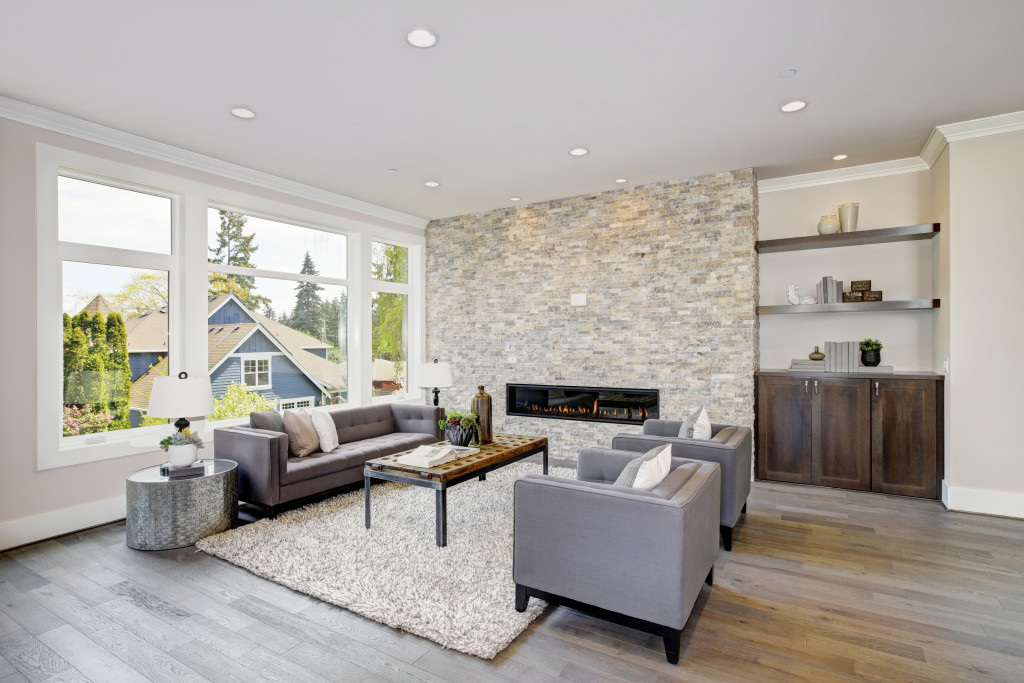Most people don’t go about their homes or make improvements thinking in terms of the hazards involved. Unless you have a child or are taking care of a senior, we usually feel entirely safe at home.
But many accidents can happen around the house, and the risks aren’t just for the very old or very young. To practice safer behavior, we can learn something useful from the most pressing danger of recent times.
A lesson from COVID-19
We’ve had to spend more time dealing with the coronavirus than many people might have hoped. Indeed, it’s taken longer than anyone wanted. Most of us would love to go out and socialize without wearing a mask. We’re itching to travel and go back to enjoying our favorite restaurants and other leisure activities.
It’s a small consolation, but we can also take away an important lesson from the pandemic: when it comes to risk management, multiple layers of safety are vital. Cutting downtime in public areas and staying at home will reduce the risk of getting infected. So will wearing face masks, continually washing hands, disinfecting surfaces, and observing social distancing and avoiding indoor gatherings.
Individually, these safety measures help. But they are much more effective when they work in concert. You can work from home, but if you go to a party with your friends, you’re at higher risk than the person who attends via Zoom. And if people at that party wear masks, but don’t observe safe distancing or practice hand sanitation, the risks are still significant.
Household hazards affect everyone
In some ways, the situation we face with the coronavirus is the perfect case study in dealing with risk. Initially, and even for months afterward, not much was definitively known about the mechanism of infection. People could display no symptoms yet still be capable of transmitting the disease. It was an invisible threat, easily misunderstood or ignored.
This highlights a prevalent attitude towards risk. Most of us are susceptible to trivializing dangers we can’t properly understand or don’t perceive as urgent. And it manifests across all areas of life.
In terms of financial management, for instance, many people are unprepared for emergencies. A sound practice would be to have at least 3 months’ worth of paychecks in your emergency fund. But how many have the discipline to set aside money each month for the sole purpose of buffering against something that may or may not happen anytime soon?
The same thing is true of how we perceive risk at home. When you make home improvements, you do so to address current needs. You buy bathroom fixtures online for comfort and convenience, but unless you’re a senior, you don’t always factor safety into the equation. Yet studies show that hazards around the home pose dangers to even younger adults. Older people tend to be more aware of the risks involved and are more likely to adjust their behavior as needed.
Multiple layers of safety at home

These two lessons must lead to an increased awareness of household hazards, and ultimately, a change in attitudes and behaviors related to risk management. We can’t be dismissive of the dangers and costs. Data indicates that the economic impact of hospitalization due to domestic accidents is around 50% greater than that of road traffic accidents.
The risks apply to us regardless of age. Children get into accidents from reckless play; the elderly are at a greater risk of slips and falls due to their reduced mobility and physical coordination. In between, even adults in the prime of health can get injured due to fatigue, lacking sleep, or attempting difficult DIY tasks.
You can combat these risks around the house through specific measures, interventions, and upgrades. Re-evaluate your kitchen layout with an eye towards safety, and make storage more accessible. Install grab handles and use non-slip tiles for wet floors.
Print out and post safety manuals and checklists for appliances to remind everyone of essential practices. Have a relative, friend, or caregiver come over when necessary to keep an extra pair of eyes on children or seniors. And carefully consider whether you’re capable of accomplishing a DIY job safely.
Above all, though, layer these safety measures. This isn’t about being paranoid. In fact, the greater your awareness of risk at home, the more you get to take ownership and be prepared for it. You’ll be able to limit your exposure to danger by intentionally applying multiple levels of risk management. And it gives you greater peace of mind knowing that you’ve done all you can to create a safer home environment.

